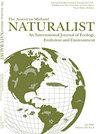火对昆虫传粉昆虫群落花蜜质量和数量的影响
IF 0.6
4区 环境科学与生态学
Q4 Agricultural and Biological Sciences
引用次数: 2
摘要
摘要由于栖息地的丧失和退化,草原昆虫传粉昆虫的数量已经减少。斑块焚烧是一种用于减少木本植物入侵和维护草原栖息地的管理方法。然而,火灾对昆虫授粉者可用的花资源(花蜜量、总糖和蔗糖浓度)的质量和数量的影响还没有得到充分的研究。评估自上次火灾以来的时间和火灾季节如何影响花蜜的质量和数量,对于了解火灾对昆虫传粉昆虫群落的总体影响至关重要。在这项研究中,在自然保护协会的Joseph H.William的Tallgrash草原保护区选择了10种开花的forb物种(Asclepias viridis、Baptisia alba、Cirsium undatum、Desmodium canadensise、Monarda citroidora、Monardda瘘管病、Oenothera speciosa、Penstemon tubaeflorus、Ruellia humilis、Spiranthes cernua),该保护区采用了焚烧和放牧的方式。研究地点分别于2018年春季、2018年夏季、2019年夏季和2020年春季进行焚烧,每种处理重复三次(共12个焚烧单位)。在每个单元中,我们用微毛细管从每个植物物种的开花个体中收集花蜜,以测量昆虫授粉者在任何给定时间可以获得的直立作物或花朵中的花蜜。记录花蜜的总体积和蔗糖浓度,并计算糖的总毫克数。加拿大草的开花个体仅位于前一年春天被烧毁的单位中,而盆花的开花个体只位于前一个夏天被烧毁的单元中。对于剩下的八个物种,花蜜的总体积、糖的总毫克数和蔗糖浓度随着不同物种的不同烧伤方案而变化。蟹蛛(圆尾蛛科)的波状圆尾蛛花序具有更高的花蜜量和更高的可用糖量。这项研究强调了具有不同回火间隔的斑块焚烧方法如何通过提供广泛的花蜜质量和数量来支持具有不同营养需求的昆虫传粉昆虫,从而使社区层面的昆虫传粉者受益。本文章由计算机程序翻译,如有差异,请以英文原文为准。
The Impact of Fire on Nectar Quality and Quantity for Insect Pollinator Communities
Abstract. Grassland insect pollinators have undergone population declines due to habitat loss and degradation. Patch-burning is a management method used to reduce woody plant encroachment and maintain grassland habitats. However, the impacts of fire on the quality and quantity of floral resources (nectar volume, total sugar, and sucrose concentration) available to insect pollinators are understudied. Evaluating how time since last fire and season of fire impact nectar quality and quantity is vital to understanding the overall impact of fire on insect pollinator communities. For this study, 10 flowering forb species (Asclepias viridis, Baptisia alba, Cirsium undulatum, Desmodium canadense, Monarda citriodora, Monarda fistulosa, Oenothera speciosa, Penstemon tubaeflorus, Ruellia humilis, Spiranthes cernua) were selected in The Nature Conservancy's Joseph H. William's Tallgrass Prairie Preserve in an area managed with patch-burning and cattle grazing. Study sites were burned in spring 2018, summer 2018, summer 2019, and spring 2020, with three replicates of each treatment (for 12 total burn units). In each unit, we collected nectar from flowering individuals of each plant species with microcapillary tubes to measure standing crop or the nectar in flowers at any given time that is available to insect pollinators. Total volume of nectar and sucrose concentration were recorded, and total mg of sugar was calculated. Desmodium canadense flowering individuals were only located in units burned the previous spring, whereas P. tubaeflorus flowering individuals were only located in units burned the previous summer. For the eight remaining species, total volume of nectar, total mg of sugar, and sucrose concentration varied with different burn regimens for different species. Cirsium undulatum inflorescences with crab spiders (Thomisidae) had higher volumes of nectar and higher amounts of sugar available. This study highlights how a patch-burn approach with different fire return intervals may benefit insect pollinators at the community level by providing a wide range of nectar qualities and quantities to support insect pollinators with different nutritional needs.
求助全文
通过发布文献求助,成功后即可免费获取论文全文。
去求助
来源期刊

American Midland Naturalist
环境科学-生态学
CiteScore
1.20
自引率
0.00%
发文量
38
审稿时长
18-36 weeks
期刊介绍:
The American Midland Naturalist has been published for 90 years by the University of Notre Dame. The connotations of Midland and Naturalist have broadened and its geographic coverage now includes North America with occasional articles from other continents. The old image of naturalist has changed and the journal publishes what Charles Elton aptly termed "scientific natural history" including field and experimental biology. Its significance and breadth of coverage are evident in that the American Midland Naturalist is among the most frequently cited journals in publications on ecology, mammalogy, herpetology, ornithology, ichthyology, parasitology, aquatic and invertebrate biology and other biological disciplines.
 求助内容:
求助内容: 应助结果提醒方式:
应助结果提醒方式:


